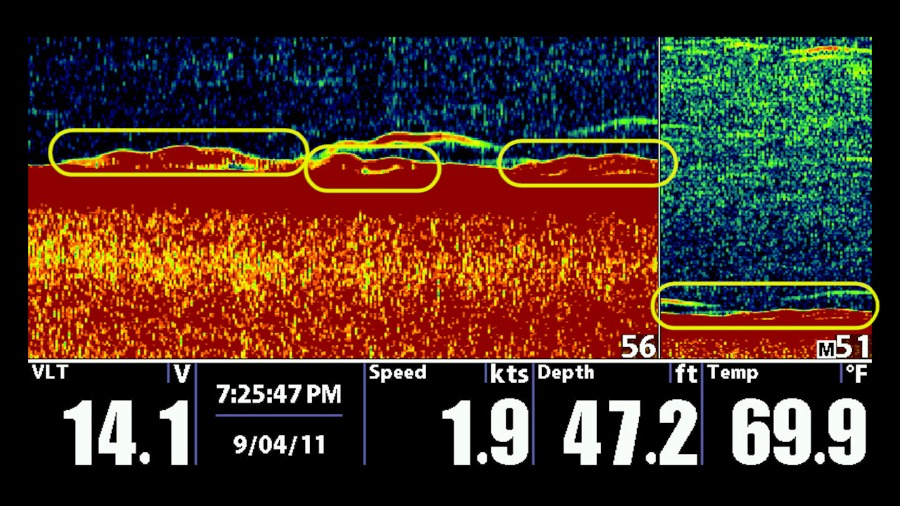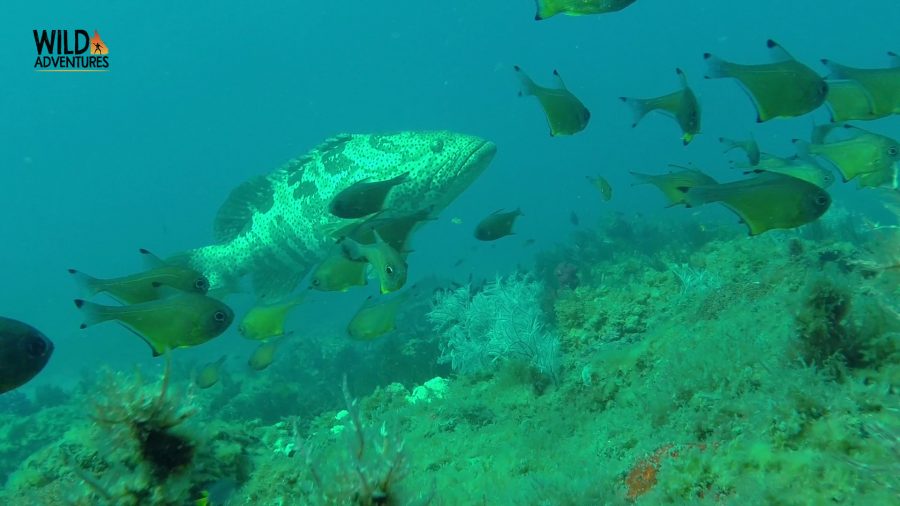Observing Fish Behaviour To Catch More Fish

While on the bottom in about 30 ft of water I watched two large cod leave the open sandy arena beside rocks where they’d been patiently watching a school of herring. On the sonar these cod would look like two rocks on the sand. Not so obvious, even though unmistakable.

Two 15kg cod resting on the sandy bottom looking clearly obvious. The sonar image requires a lot more concentrated effort to pick their presence when so close to the bottom.
One approached me, investigating. I imagined how that 15 kilo fish would now display on the screen if a boat idled overhead. When clear above the bottom the fish becomes the simplest of targets, and when it stopped to stare (a common habit) you could imagine a big solid line being drawn above the sea floor letting you know what the fish is doing.

When spooked, the cod would power off with one huge tail thump, then glide for five to eight metres, pivot, stare, and repeat before breaking into a controlled steady swim.

Observation reveals so much- not only the way the cod moves but the type of structure nearby, soft corals and a blanket of small fish smother the bottom.
The speed it moved was noted, along with the rise and fall in the water column. When it sat in a gap between a rock ledge and another rock it made you think how the hell would that appear on sonar.
Once you Know Your Animal it makes interpreting sonar images so much easier as you know how the fish moves, behaves and the types of areas they like to hunt or rest. Close your eyes and think about how a barramundi might behave- some may picture the fish tight beside a log in an ambush position, so imagine how close you will have to look to find that barra on screen, you might only see half of it, but because you know one behaviour type of that animal you will look closer at every log or branch appearing on your sonar unit’s LCD screen.
When spearfishing or underwater filming, the gathered experience leads you back to look in the same areas next time as many animals are ‘creatures of habit.’
Finding targets becomes easier. It’s no different to a hunter in the field concentrating efforts in areas most likely to house a target animal. Hunters with keen eyes will count and see more animals than non-hunting friends because the hunter Knows the Environment and Knows the Animal.

Understanding your animal helps with interpreting sonar images.
Sounding is exactly the same- in the training course there’s a multitude of different species recorded underwater so you can observe their swimming styles, schooling formations and how they use structure. Watch it over and over again until you envisage how each species uses its environment. This type of observation increases the ability to process sonar info and identify target species, simply by having appreciation for the animal and investing time into improving personal awareness of your surroundings.
Click here to visit the online training course.
Regards,
Johnny Mitchell
REGISTER FOR FREE CONTENT, EDUCATIONAL BLOGS & DEALS

